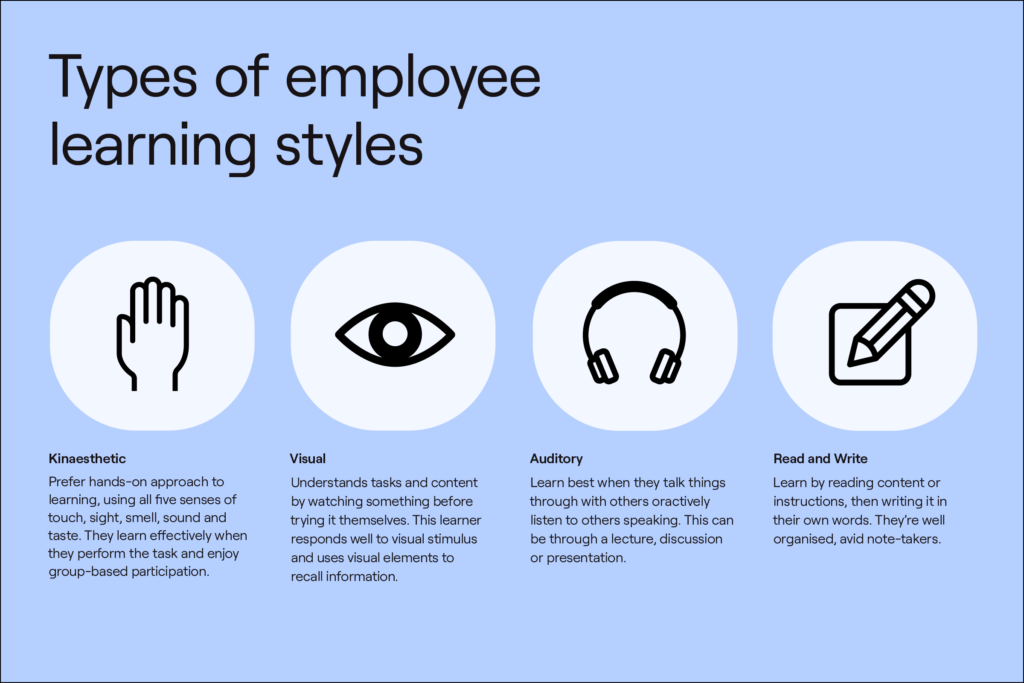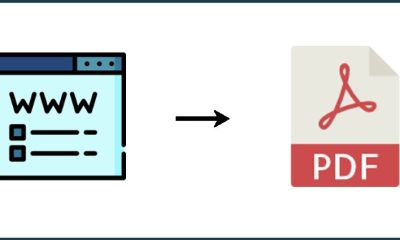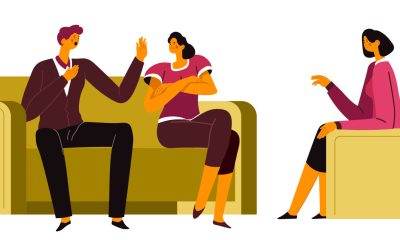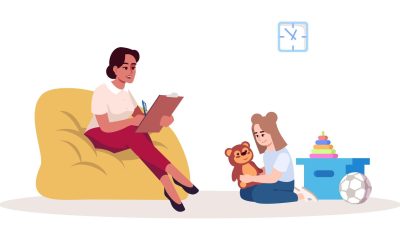Career Tips
Different Learning Styles Of Employees In The Work Place

High-performing teams need learning and development. We all know that training staff boosts productivity, engagement, and happiness, but have you considered how your team learns?
Learners process information differently. Recognizing employee learning styles in the workplace is vital because no two people are alike.
By adapting learning and development content to different learning styles, your employees will be more engaged with the new knowledge and learn more effectively.
Why tailor training methods to different learning styles?
Your staff will learn more when you coach them according to their learning styles.
Knowing your employees’ learning styles lets you personalize training materials to their strengths and make learning easier. They’ll quickly apply what they’ve learnt.
Examine your team at your next training event. Some people are engaged and taking notes, while others are on their phones.
This learning format may not work for the latter. Reading the handouts or slide presentation afterward may help.
What are the different types of employee learning styles in the workplace?
There are 4 main types of learning styles, but many people overlap with two or even three different styles. The different learning styles below are based on the VARK method.
The various learning styles from the VARK method include:
- Visual learning styles
- Auditory learning styles
- Reading and writing learning styles
- Kinaesthetic learning styles
This method acknowledges that everyone processes information differently and therefore requires different forms of delivery to learn.
1. Visual Learners
Visual learners get an understanding of tasks and content by observing something before attempting it themselves. Visual learners respond effectively to visual stimuli and learning materials, and they recall information using visual aspects they have seen.
In the workplace, this could include viewing a demonstration of an activity, such as using a cash register, and then trying it themselves.
What are the characteristics of visual learners?
- They are often creative and can easily visualise complex situations
- Find using graphs, mind maps, flashcards and flow charts helpful
- Find taking notes a helpful way to retain information
- Easily distracted by aesthetic or visual environments
Examples of visual learning strategies include:
- Instructional or voice-over videos
- Powerpoint presentations
- Photographs
- Diagrams, flowcharts and flashcards
- Timelines
- Highlighting notes and key information
- Color-coded notes and learning material to create visual stimulation
2. Auditory Learners
When information is explained in a step-by-step style, auditory learners understand it.
Aural learners learn best when they are given instructions and engage in active back-and-forth discourse about the topic. Furthermore, they learn best when they debate things with others or actively listen to others speak, whether through a lecture, conversation, or presentation.
What are the characteristics of auditory learners?
- Respond well to verbal instructions and find them easy to follow
- Gain an understanding of the task at hand by talking things through
- Speak well and are often good at presenting
- Find it difficult to concentrate when there is distracting sound in the background
Examples of auditory learning include:
- Lectures
- Audio recordings
- Group discussions
- One-on-one meetings
- Brainstorming sessions
3. Read and Write Learners
Read and write learners learn by reading content or instructions and then writing it out in their own words. Reading learners are well-organised, avid note-takers and digest information when they write down and re-read the information.
What are the characteristics of read-and-write learners?
- Writes notes when reading through the learning material
- Enjoys reading and writing
- Often uses lists and categories to organise their notes
Examples of read-and-write learning include:
- Textbook style manuals
- Reading learning material and writing notes
- Ordering tasks or learnings into categories and levels of priority
- Asking your team to read over notes and condense key information down to one page.
4. Kinaesthetic Learners
Kinaesthetic learners learn via touching, seeing, smelling, hearing, and tasting.
They learn best by doing and prefer group sessions.
Kinaesthetic learners learn better through hands-on activities than lectures.
Kinaesthetic learners need shorter employee training sessions. Changing rooms or going outside for each session helps kinaesthetic learners focus. Who doesn’t like fresh air?
What are the characteristics of kinaesthetic learners?
- They find it hard to sit and learn in a traditional ‘classroom’ environment
- Learns through movement
- Likes to build things and is very hands-on
- Becomes restless when sitting down
- Physically coordinated and typically good at sports
Examples of using kinaesthetic learning include:
- Demonstrations
- Performing physical tasks
- Simulations
- In-person scenarios
How can you encourage employees to adopt these dynamic training methods?
If you have just started to implement these training methods in your learning and development program, you can:
- Let your team know that they have the option to learn based on their own learning style and that you will accommodate their needs.
- Actively talk about the different learning styles in the workplace and provide some information about the options available.
- Ask your employees which learning style they prefer. This could be in the form of a survey or 1-1 meeting.
- Use an online employee learning management system to gather feedback and statistics on learning progress
By understanding the various employee learning styles, you can design a training program that is appropriate for all members of your team. What are the advantages? A more knowledgeable, engaged, and well-equipped team capable of tackling any challenge!






















